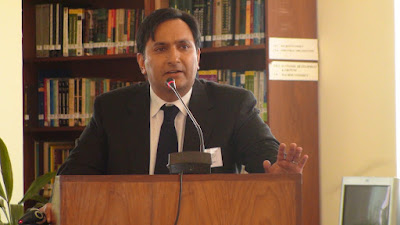Measuring Technology Differences across Football Manufacturers in Sialkot
March 24, 2016
Tariq Raza and Azam Chaudhry, Lahore School of Economics
The existing literature shows that SMEs are more inclined towards labor-intensive technologies, whereas larger enterprises are more capital intensive which is one reason why production capacity varies across different sized firms [You (1995), Kitching (1982)]. Firms operate under different environment and SMEs may experience conditions and circumstances which may differ with the settings in which larger firms function. For instance, SME’s may face certain constraints which, relatively considering may not be that big an issue for larger firms [Yang et.al (2007)]. Given that firms function in dissimilar environment, a major concern may be; are smaller firms less efficient and/or are smaller firms not rational in their decisions?
Football industry is season dependent [mainly due to major football events]. Thus it is imperative for local producers to become adept in aggrandizing production volumes during periods of high football demand. For this paper we will only focus on the 32-panel, size 5 football, which to date remains the most commonly produced football.
We plan to address the issue of technological differences across firms by focusing on a sample of football manufacturers in Sialkot. In particular, we plan to look at the differences in the cutting process across these firms and then measure how far each firm is from an efficiency frontier based on the cutting technology they use. Using our data, we will estimate levels of technical efficiency across firms, where this is defined as “the ability to minimize input use in the production of a given output vector, or the ability to obtain maximum output from a given input vector”, [Lovell et. al (2000)].
For the conference paper, we plan to proceed in the following manner:
- Give a brief historical description of how Sialkot’s sports sector developed and the role of factor accumulation in the advancement of football industry.
- Explain the production process common across all firms.
- Define a theoretical framework for predicting production capacity of each type of cutting machine currently prevalent in the football sector.
- Use video evidences to construct production frontier for each type of cutting technology.
- Discuss the changes in the cutting technology overtime.
Use a technology output capacity model to determine production frontiers for different firms across the industry and compare them with each other in order to come up with relative technical efficiencies.
Bio
Dr. Azam Chaudhry is Professor of Economics at the Lahore School and the Dean of the Economics Faculty. He has a B.Sc. (Hons.) in Economics from London School of Economics where he specialized in Monetary Economics, Econometrics and Corporate Finance and a M.A. and Ph.D in Economics from Brown University, USA. He joined the Lahore School of Economics in 2005 and before that he worked for the World Bank. His areas of interests are International Trade, Macro Economics and Economic Growth. His current research projects are: Spillovers in technology adoption: evidence from a randomized experiment in Pakistan and Effects of external migration on school enrollments, accumulated schooling and dropouts in Punjab.
He teaches Econometrics and Macroeconomics at the Lahore School and his research interests include Innovation and Technological Change, Institutional Economics, Economic Growth and Development, Political Economy and Empirical Macroeconomics and Microeconomics.
Labels: Abstract, Annual Conference, CREB, Management of Pakistan Economy, Twelfth Annual Conference
posted by S A J Shirazi @ 3/24/2016 01:29:00 PM,
![]()
![]()
City Campus
104 - C, Gulberg III,
Lahore, Pakistan.
Phones: 92-42-35714936, 38474385
Fax: 92-42-36560905
Main Campus
Intersection Main Boulevard Phase VI
Burki Road
Lahore, Pakistan.
Phones: 37254099, 37254311

